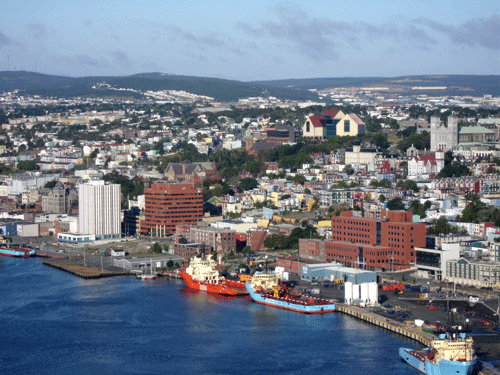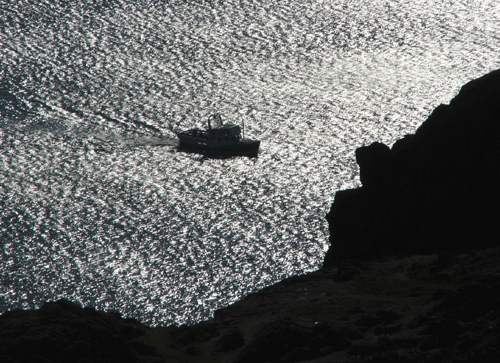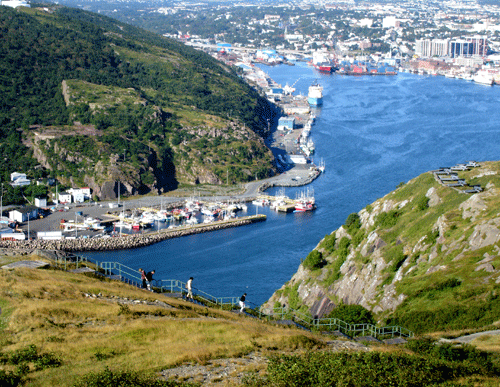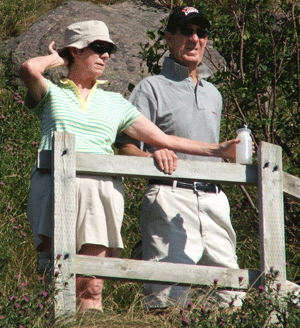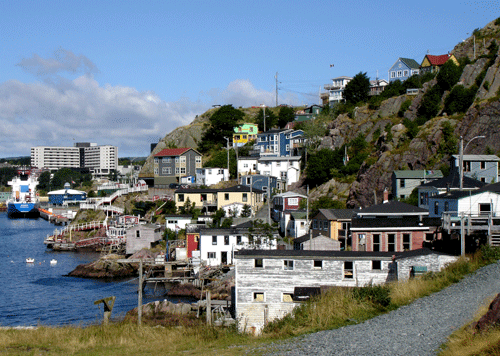walking in the other direction showed me that if you threw a stone into it, you’d hear it bounce along the rock walls and finally splash into the sea far back at the bottom of the crack. I couldn’t throw rocks with such precision, but I passed on this tidbit to the next pair of people – also tourists – whom I met on the steps.
Gazing at the view towards the end of the trail, I got to chatting to a man with an impressive assortment of camera gear. It turned out he wasn’t a professional, he was making a video about St. John’s for some friends who live far away. We talked for a long time, though. He was Cuban by origin, and had come to Newfoundland as a refugee sixteen years earlier. Traveling for the Cuban government at a time when planes still stopped to refuel in Gander, he’d walked through a door marked “immigration,” held out his passport, and apologetically asked for asylum, not knowing what to expect. They took one look and welcomed him to Canada. They drove him to St. John’s, where they put him up in a furnished apartment while they handled routine background checks. Three weeks later they gave him his papers and told he was welcome to settle anywhere he liked in the country. But by then he’d found Newfoundland a good place, and didn’t see any reason to leave. Sixteen years later, this is still his home. He had to change professions in order to make a living, but he managed that, and has found St. John’s a
